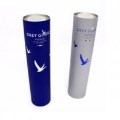If this is your company, CONTACT US to activate Packbase™ software to build your portal.


The World Health Organisation estimates that around 50% of product recalls are attributed to artwork errors and mislabeling. The industry’s ‘speed to market’ requirements have put more pressure on artwork teams across all aspects of the supply chain to deliver ‘right first time’ and ‘on-time’ for critical product launches. This has inevitably meant the risk from errors is much higher.
Here are 7 top tips to get your pharmaceutical artwork right:
1. Select a vendor who is compliant and in full control of your artwork lifecycle changes. Look for a market experienced partner accredited to the Pharmaceutical Code of Practice standard, PS9000 or works to ISO9001 or GMP guidelines – preferably both.
2. Ensure your artwork brief is correct. Errors and omissions extend lead-times and escalate costs. Often the key issues are simply: typographical errors on supplied copy, technical drawings are not correct or mistakes on standard elements such as barcodes, expiry dates and even the use of incorrect pack profiles.
3. Provide clear changes and comments. Poor or ambiguous annotations on artwork are frequent and often result in questions and further delays.
4. Select a vendor who understands the print process. Some artwork suppliers don’t understand the technical attributes required to print. Not receiving the correct file build and pre-press requirements will lead to further details.
5. Clearly define the brief prior to any outsourcing and both parties to agree source documents and rooting. The introduction of a brief acceptance step to approve the content of the brief prior to commencement of the order is simple, yet effective. This flight-check should take place before any artwork is created.
6. Use source data (the brief) as the lead document will ensure compliance at every stage. Policing the process throughout and reviewing every stage will reduce the artwork cycles as well as other benefits such as improved consistency and supplier relationships.
7. A supplier’s artwork systems should fit in with your own ways of working. There should also be a clear understanding that the approved artwork file should not require any further manipulation by the print vendor so there are no touch-points in the process. The use of an automated workflow will significantly reduce the potential of any errors.













